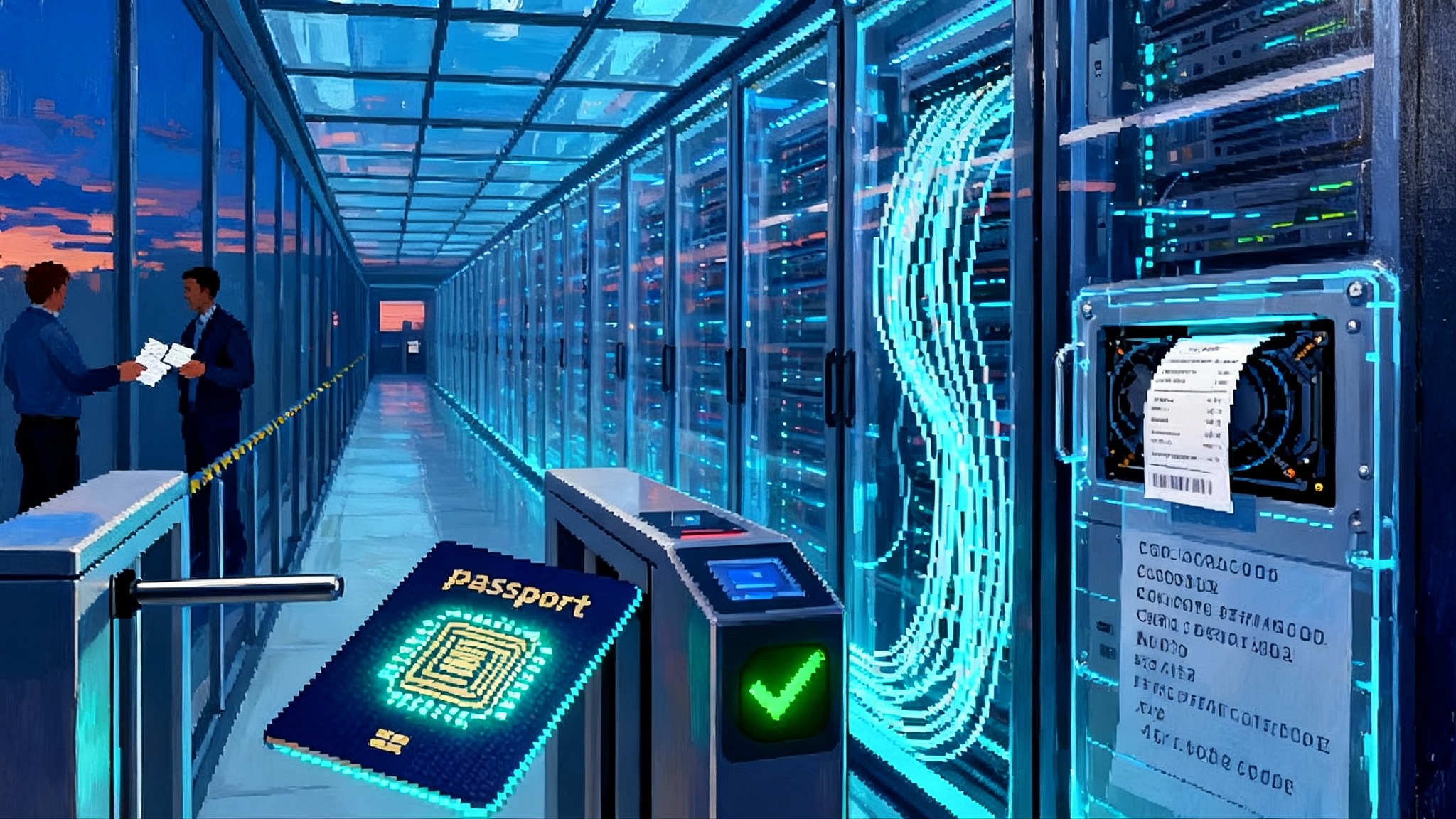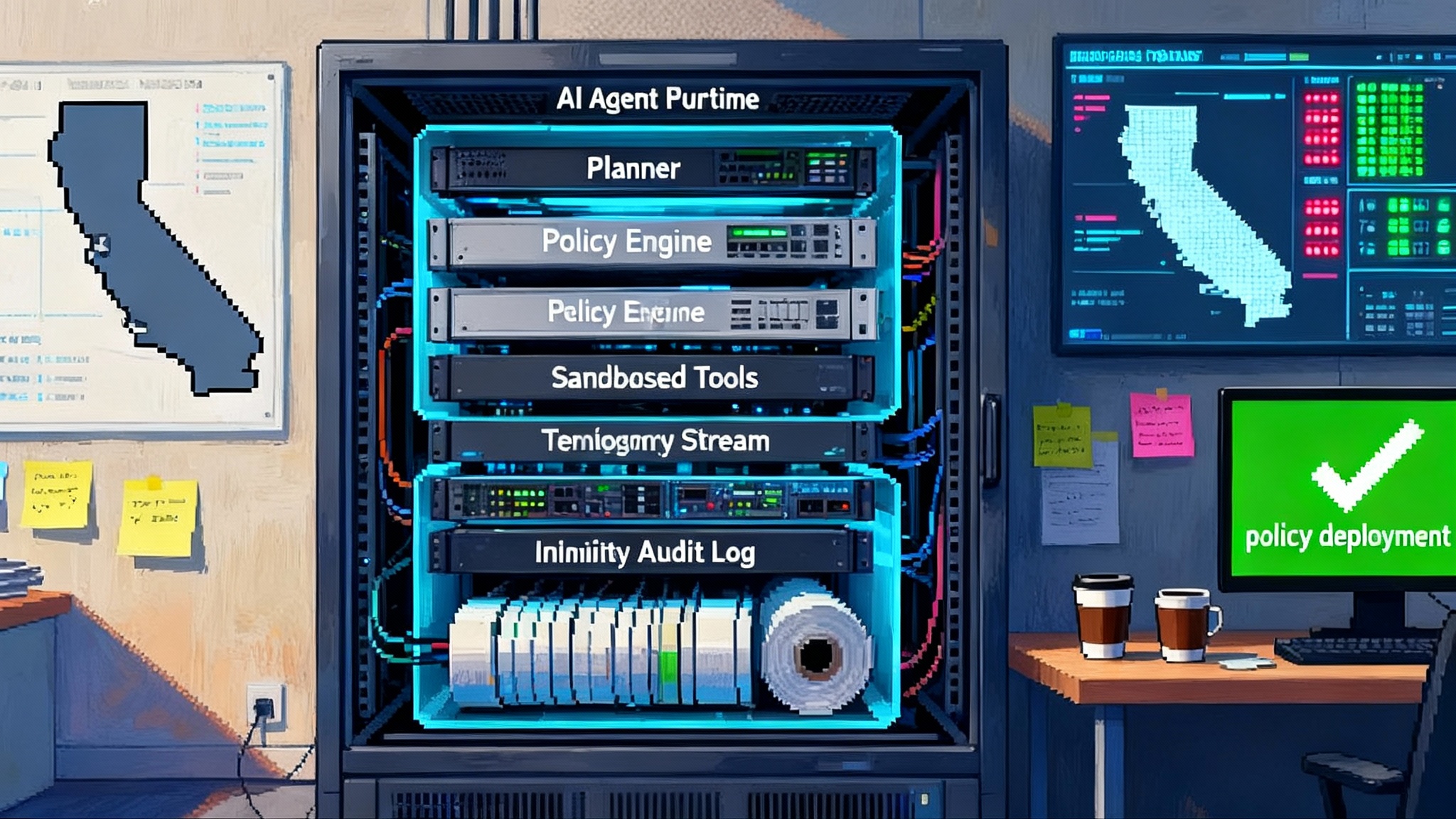Signed or Suspect: Why Content Credentials Win the Web
Watermarks and cryptographic provenance are moving from lab to policy. As the EU sets timelines and platforms ship tools, unsigned media will face friction while signed content wins speed and trust.

The moment unsigned media starts to look suspicious
A quiet but decisive shift is underway. On September 4, 2025, the European Union’s AI Office opened participation for drafting a Code of Practice on transparent generative AI systems, then extended the related public consultation to October 9, 2025. The aim is practical and near term. Providers and deployers will need to make AI content detectable by machines and disclosed to people, and this code will show them how to do it in time for transparency obligations that begin in August 2026. You can see the details and deadlines in the official European Commission consultation announcement.
Meanwhile, the tech stack is snapping into place. Google’s DeepMind is rolling out SynthID Detector so creators, journalists, and platforms can check for watermarks across text, image, audio, and video. Adobe keeps adding Content Credentials to Creative Cloud workflows. Camera makers and phone vendors are experimenting with in-camera signing. And a key standards body, the Coalition for Content Provenance and Authenticity, shipped version 2.2 of its specification in May 2025. The direction is clear. The next default is not only to ask whether something looks real, it is to ask whether it is signed.
The philosophical flip is simple to state and sweeping in effect: unsigned media will be treated as suspect by design. That does not mean it is false. It means the burden of proof shifts. The baseline experience becomes verify first, then act.
Why this time is different
We have had detection tools for years. They are like breathalyzers. They check the current state and make a best guess. Watermarks and cryptographic credentials work differently. They ride with the content from the moment of creation, like a tamper evident seal on a bottle. That seal can survive compression, crops, and edits. More important, it comes with a public key that anyone can use to check who signed it and when.
This seal changes user experience patterns. Think of the padlock icon that made the shift from http to https visible in browsers. Or the way email moved from spam filters to domain keys and sender policies. First we tried to detect badness. Then we authenticated goodness. The web learned to prefer signed traffic for payments and personal data. The media web is about to learn the same habit for pixels, frames, and words.
How content credentials work in practice
Content credentials function like a digital passport. When a camera, phone, or editing tool creates or modifies a file, it writes a manifest. The manifest records what happened, the software agent involved, and a cryptographic signature over a hash of the asset. The signature is linked to a certificate that can be traced to a trusted list. If the file changes in ways that are allowed, a new manifest records the change and signs again. The history travels with the asset, and verifiers can read it without calling home.
This is not a thought experiment. The Coalition for Content Provenance and Authenticity formalizes these manifests and signatures, and its 2.2 release in May 2025 tightened soft binding and added better timestamp and revocation handling, which are crucial for incident response and long lived archives. If you want the details, the spec is readable and specific about manifest states and trust lists in the official C2PA 2.2 specification.
You do not need to be a cryptographer to benefit. The mental model is simple: ingredients and a recipe. Each contributor to a final asset can sign their piece, and the editor signs the assembled dish. If later you need to recall an ingredient, the provenance trail lets you isolate where it went. That is why newsrooms, studios, and marketing teams care. It shortens forensics from days to minutes and makes cross team accountability routine.
The philosophical case for signed or suspect
The internet already runs on a similar norm. When you make a card payment online, unsigned pages raise warnings. When your phone shows Unknown Caller, you think twice. When your inbox sees mail without the proper sender records, it moves it out of sight. These are not censorship. They are defaults that save attention and reduce harm.
Unsigned media will slide into that same social contract. The cost of fakes is now low, the cost of checking a signature is now low, and the audience is overloaded. Attention becomes a scarce resource governed by quick heuristics. A green check next to a photo or clip is faster than an investigation. Platforms and agents will lean into that speed.
What changes for attention markets
- Newsfeeds and search results will prioritize signed items. This is not about taste, it is about liability and user trust. If a platform can show that it boosted content with verified provenance and labeled the rest, it can point to a mitigation measure when regulators ask why.
- Advertisers will require provenance for brand safety. Media plans already specify viewability and fraud controls. Expect a checkbox for signed creative with supply chain manifests attached. Agencies that standardize this first will win spend from cautious brands.
- Creators will use credentials as a competitive signal. A songwriter who can prove authorship and edit history can license faster. A photojournalist with in-camera signing can move images to wire services without the manual vetting that slows breaking coverage.
These shifts echo broader changes across the stack. When your browser becomes an agent that acts on your behalf, provenance becomes a first filter for what it ingests and executes. If you have not explored how this dynamic plays out, see how we framed the agentic browser era and why it changes distribution itself.
What changes for agents and automation
- Retrieval augmented generation agents will verify before they ingest. If your agent compiles a brief from videos and press releases, it will prefer sources with verifiable signatures and clear licenses. This is machine hygiene.
- Enterprise bots will fence their actions with provenance policies. A financial assistant that drafts a filing will be required to cite signed documents and avoid unsigned screenshots. Compliance officers will sleep better.
- Security teams will flag unsigned control content. If a model update, a policy file, or a prompt library arrives without a signature, deployment pipelines will pause. The lesson from software supply chains will carry over to data and media chains.
Agents that act without human oversight need strong trust boundaries. We have argued that memory is the new moat because context governs quality. Provenance complements that memory by proving where context came from and what has changed along the way. The result is a cleaner substrate for automation that has to decide fast and at scale.
The upside map
- Verification native user experiences: A camera app that shows a subtle seal while shooting. A share dialog that says includes edit history and lets you preview it. A social post that auto expands the provenance card for sensitive topics.
- Safer automation: Agents that only click, trade, or post after a fast signature check. This reduces the risk of prompt injection via doctored screenshots or mislabeled datasets.
- Faster moderation and forensics: When a video goes viral, moderators can separate signed originals from unsubtle knockoffs in minutes. If a signer’s key is compromised, revocation records and timestamps let platforms withdraw trust without pulling down everything.
- Better credit and compensation: Musicians, writers, and visual artists can trace derivative use. This does not solve licensing by itself, but it makes negotiations factual and faster.
Privacy is part of the upside when implemented well. Privacy preserving credentials and selective disclosure let at risk contributors prove integrity without revealing identity. That is important for activists, journalists, and anyone who must separate their work from their personal life.
The risk map
- Authenticity rents: If the only way to get reach is to sign through a large vendor, the vendor can extract fees. Small creators could face a pay to be believed problem.
- Chokepoints in trust lists: Whoever controls the default trust list can tilt the field. If a browser, platform, or cloud sets the root of trust and makes alternative roots hard to add, independence suffers.
- Anonymity erosion: Signatures can leak identity or linkability over time. Even when pseudonyms are used, correlating keys across projects can expose patterns. At risk communities need real protections.
- Jurisdiction creep: A signature standard built for consumer fraud could become a lever for speech controls in more restrictive environments.
The antidote is principled design. Public goods like open logs and multi root trust can reduce concentration risk, while privacy preserving techniques can keep attribution separate from identity. We have covered how proofs can guard secrets while proving facts in our look at confidential AI with proofs.
Design principles that keep the web open
- Anonymous and pseudonymous signing: Support blind signatures and privacy preserving credentials so a creator can prove authorship and integrity without doxxing themselves. This is proven cryptography that product teams can adopt.
- Multiple trust roots by default: Let users and organizations install additional trust lists as easily as they choose a search engine. Interop should be a feature, not an afterthought.
- Transparency logs and open audit: Append signatures and key events to public or consortium logs. Make it normal for third parties to watch for unusual key behavior and publish alerts.
- Clear fallbacks for unsigned content: Not all valuable media will be signed. Design interfaces that label unsigned items without burying them. Allow contextual overrides with friction, such as requiring a second click for resharing.
- Revocation and incident drills: Keys get lost. Plan for it. Practice a recall for a compromised signer so you know which assets to reissue and how to communicate it.
What to build now so you ride the wave, not the rulebook
-
Verify by default libraries. If you ship a media app, add provenance verification to your ingest path. Cache verdicts and expose a simple checkmark and a details view. If the asset is signed, show who and when. If not, label it as unknown rather than unsafe.
-
Creator keys as a product. Offer lightweight key wallets for creators that back up to hardware when available, rotate on a schedule, and support team roles. Think of it as password managers for signatures.
-
Provenance middleware for enterprises. Build a service that attaches, validates, and transforms manifests as assets move from capture to publish. Include policy templates for legal, marketing, and security teams.
-
Agent guardrails. Add a gate in every autonomous workflow that checks signatures on control content, datasets, and external references. Stop on failure, log the reason, and provide a one click override with risk notes.
-
Verification first user experiences. Replace mystery warnings with useful cards. Show the software that touched the file, the steps taken, and any missing pieces. People decide better when they see the chain of custody.
-
Open test suites. Publish a battery of edge cases, from heavy compression to frame accurate edits, so vendors can measure how well their credentials survive real use. Make your scoring public.
-
Privacy preserving modes. Offer one time keys for sensitive shoots, onion routed verification for at risk contributors, and redaction of location or device identifiers by default.
-
Camera and capture integrations. Work with camera makers and phone vendors to sign at capture and to preserve credentials across edits. Every lost manifest is a future support ticket.
-
Transparency logs as a service. Host append only logs for signatures, revocations, and incident notices. Give newsrooms a dashboard and an API for investigations.
-
Compliance kits. Map your workflows to Article 50 and upcoming platform policies. Provide customers with a checklist and sample controls so audits do not turn into archaeology.
How to track the shift before it is obvious
- Look for provenance badges in consumer apps. When everyday tools start showing subtle seals by default, adoption is underway.
- Watch ad platform requirements. The moment a major network makes signed creative a default setting for brand safety, the flywheel turns.
- Read platform transparency reports. If they begin to report the share of uploads with valid credentials, they are managing the metric internally.
- Follow trust list governance. Expansions, new roots, and public elections for maintainers are signals that the ecosystem is maturing.
What about detectors
Detectors still matter. They catch legacy and malicious content that will never carry a signature. But detectors alone will not carry the next decade. They are a rear view mirror. Credentials are a steering wheel and a seat belt. Use both, design for the latter.
The governance layer we will argue about
There is no purely technical escape from human choice. Someone will decide which certificate authorities are trustworthy, how long keys live, and what to do when signatures are misused. The least bad answer is layered governance. Industry bodies set open specs. Public or consortium logs provide transparency. Regulators define outcomes without freezing methods. Civil society pressure tests abuse cases. Product teams bake in privacy and ease.
The European process is not the only path, but it is a forcing function. It sets dates and signals priorities. Even if your market is the United States, you will ship into apps and platforms that want a single global posture. That posture is moving toward sign by default, label at the edge, and verify before any meaningful action.
The bottom line
Cryptographic content credentials are about to become default infrastructure. The mix of clear regulatory timelines, working standards, and visible product launches is enough to tip norms. Unsigned media will not vanish and it should not, but it will carry friction and lower reach. Signed media will enjoy fast lanes for distribution, monetization, and automation. If you build software that touches media or agents that act on media, your roadmap should treat provenance like payments: table stakes, with good ergonomics and strong privacy.
The next year will decide who sets the defaults. You can wait to be regulated into the pattern, or you can ship it now and help shape how open, affordable, and safe it becomes. The web has been here before. It rewards early movers who pair trust with speed.







